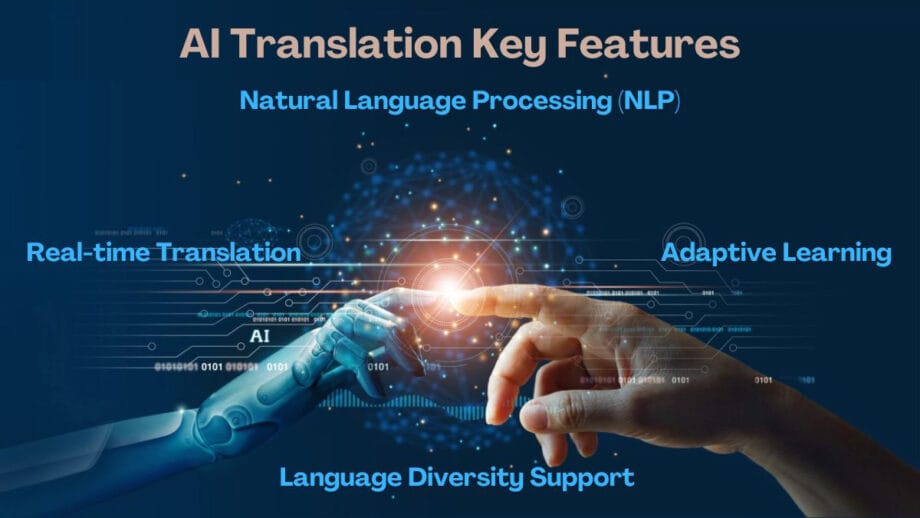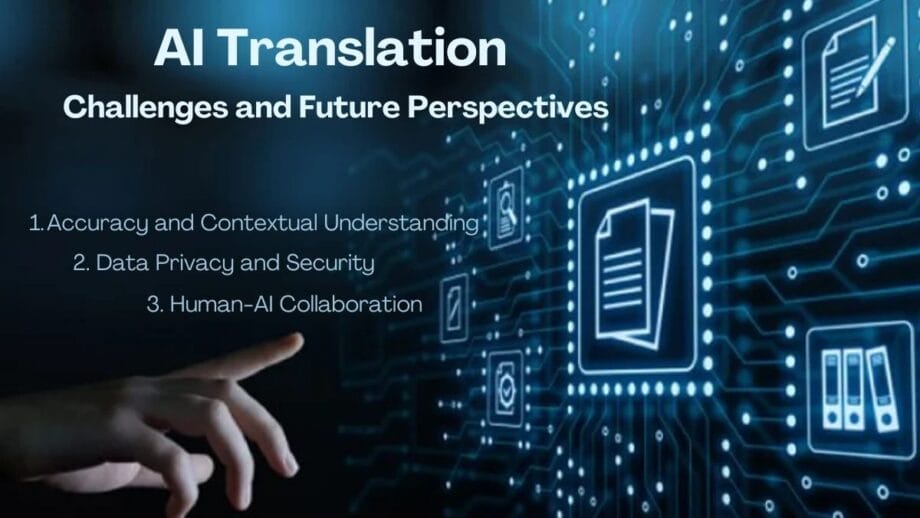The ever-changing dynamics of global education have necessitated the need for accessible and flexible learning options. eLearning has the potential to fulfill the growing demands of global learning effectively. Nevertheless, the potential of eLearning language barriers has proven to be a considerable impediment to leveraging this learning potential completely.
The new-age technology has the power to transcend language barriers effectively. Here comes Artificial Intelligence and AI language translation, which are making steady progress with a lot of promise in transforming translation for global eLearning.
What are the Common Challenges Faced by Global eLearning?
As the world becomes more interconnected, the demand for educational content will also skyrocket. The diversity of educational requirements across the globe prompted accessible training materials for all. In this connection, eLearning plays a pivotal role in meeting growing demands for education and institutes often take help from eLearning solution providers to fulfill their needs.
Despite the potential of eLearning, it is severely hindered in the smooth progression of global learning. Diversity poses a real challenge for learners because they are grappling with understanding the content that is presented in a different language.
Consequently, it dramatically reduces engagement, leading to comprehension of the content. Depending on the human translators in the realm of conventional the translation process is generally time-consuming and does not fit the bill in the fast-paced, real-time eLearning realm.
Related: The Future of Learning: Potential and Power of Learning Management Systems (LMSs).
The Impact of eLearning Translation Employing AI (Artificial Technology)
It refers to employing AI-powered software to help translate eLearning content into another language. This approach of the kind can be attributed for various reasons – learners cannot comprehend it because it is written in a different language, or the content can be accessible to a wide spectrum audience across the globe.
History witnessed the translation of eLearning is a tedious and significantly time-consuming endeavor. It frequently requires a proficient translator.
However, the rapid advancement of technology, particularly AI-powered translation tools along with language processing, makes the translation process convenient, flexible, and cost-effective.
Notwithstanding its potential, it is not immune to challenges. There is no doubt that AI-powered translation is swift and convenient; the important point is that, on many occasions, it does provide accurate results.
According to the research, when AI-enabled translation can be used in real-life situations, the AI-powered translation accuracy rate varies from 60%-90%.
A good example to support this kind of translation is Google Translate. There is no doubt that inaccuracy has serious repercussions on eLearning content because it often results in frustration and confusion.
Another challenge that surfaces is that the translation of content must be sound, natural, and easy to comprehend. However, many times, it sounds robotic and sometimes seemingly bizarre. It naturally poses a lot of difficulty.
In fact, the concept of AI-based eLearning has transformed global eLearning significantly. The combination of AI with machine learning and deep learning can significantly help automatically translate from one content to another language, and even for the audio and video content, bypassing the language barriers makes the content seamlessly accessible.
Benefits of Using AI Language Translation in eLearning
Artificial intelligence has significantly impacted the eLearning industry in recent times This advancement is made possible with the latest technology that can mimic human intelligence by using NLP (Natural Language Processing) with robust algorithms like deep learning.
Unquestionably, Artificial Intelligence provides a personalized touch to a learning process that can significantly facilitate engagement and knowledge retention. There are plenty of benefits to using AI-enabled eLearning translation.
Let’s dive into them:
Faster Course Development
With the incorporation of AI-powered translation in the eLearning system, it can produce learning materials quickly, thereby hastening the delivery, which is vital in the educational system. Conventional learning falls back miserably in this direction, resulting in delayed delivery of course materials. AI-powered translation is quick to update the course through authoring tools.
Educators and instructors are taking leverage of AI-Enable translation to provide the target audience that aligns exactly with the requirements. So, it is really a great resource in the hands of the educational sector to revamp the educational journey, engaging and mesmerizing.
Real-time Translation
Learners can leverage AI-powered real-time translation to seamlessly access the content. It provides a lot of flexibility and convenience, and it comes in handy in interactive, remote classrooms, etc.
Personalized Content
Each learner indeed has their own style of learning and requirements that leave conventional education far behind because the concept of the conventional learning systems adopted does not encourage accolades of diverse learners’ needs, resulting in a stagnating learning perspective. However, AI-based learning can accommodate and customize the needs of diverse learners with a significant personal touch at its best.
See also: How is Machine Learning Used in Cybersecurity?
Multifaceted Translation
Language barriers are a considerable impediment to the proliferation of learning. AI-powered translation services are instrumental in removing language barriers from different sources like translation multimedia elements, audio, and video files apart from the simple translation of text. As a result, it can help different learners to access educational materials seamlessly.
Authoring Tools
The authoring tools come in handy for educators to help them incorporate the AI-powered service at a point in time. Furthermore, it is an asset in the hands of the organizations because they can leverage the authoring tool to augment the development of training materials that are accurate and quality-oriented. Moreover, if required, the organization can easily convert the learning material to the desired language without human intervention. Most professional language translation service providers also utilize popular authoring tools such as Articulate Storytelling360, DominKnow One, etc.
Accessibility
Accessibility is no longer confined to the dictionary as a fancy word, but it has become the most important aspect across industries, leaving no one in doubt. With the premise, AI-based translation services come as a savior in the light eLearning realm. The ability of AI-based translation can be comprehensive because it can be translated from different multimedia elements apart from translation documents in various formats. It is a huge opportune moment for the organization to take leverage of the potential AI-based translation that can help the business to grow significantly.
Key Ethical Considerations for AI Language Translation
Although AI-based translation has its advantages, it also goes through significant challenges. Let’s review some of the considerations below:
Translation Preference
It means choosing a particular setting regarding the translation of eLearning content. These choices primarily depend on numerous factors that include cultural sensitivities, aimed audiences, translation types, language variants, and the effect of the desired translated materials.
API Incorporation
One must keep a provision for integrating different APIs into the eLearning platforms. The reason for doing so is that it helps to connect with the translation services and add features and functions seamlessly.
Data protection
There is an absolute need to incorporate safety protocols at the time of incorporating AI-powered automated translation services. Generally, translation companies deal with the sensitive data of clients. So, comprehensive data protection must be there in order to safeguard the privacy of the clients effectively.
Monitoring and improvement
It is a necessity to keep track of the performance of AI-based translation services on a regular basis. Another important factor in this connection is to gather feedback from the user about the performance of it. Suppose it is found that a particular area needs to be strengthened and improved and accordingly remediated. There is no doubt that a constant morning of AI-enabled translation services can enhance the quality of the translation as we move on.
Selecting the right translation partner
It is important to pick the right language translation services that have adequate experience and knowledge of dealing with AI-powered translation along with eLearning content development. It is paramount to find ideal eLearning solution providers who are adept in integrating the two platforms mentioned above effectively and confidently without compromising accuracy and quality.
Quality Assurance
At the time of involving post-editing and measuring the quality metrics, it is imperative to evaluate the cultural sensitivity and accuracy of AI-enabled translation mindfully. Apart from this, human intervention and feedback can optimize the entire proceeding even better to align with the aimed audience.
Quick Turnaround Time
It is well-documented that AI-based translation is quick and produces the result on time. With the incorporation of AI-based translation, the translation process has become more robust than ever before. Even though human translation becomes time-consuming despite being accurate compared to machine translation. A professional translator cannot keep pace when faced with a big project. Under this circumstance, it is the much-advanced AI-based translation that covers the area that human translators are grappling with. So, all these suggest the importance of embracing AI-powered translation services.
Cultural Nitty-Gritty
One of the most pertinent points in any translation is cultural sensitivity. Only translation does not cut much ice as it involves word-to-word translation. Localization is required because it goes beyond translation. A slide mistake in translation can be serious and even lead to jail in some instances. So, the combined power of human and AI-based translation is the best bait to deliver the desired output because it strikes the right chord with the sentiment of the target audience for sure.
Related: Smart Classroom: A Futuristic Approach to Learning.
Wrapping Up

The transformative power of AI-powered Translation in the realm of eLearning is paramount. They are the architect of removing language barriers. By the end of this, you will agree that the incorporation of AI-enable Translation can reshape eLearning. That can facilitate diverse learners to access learning regardless of their cultural background.









